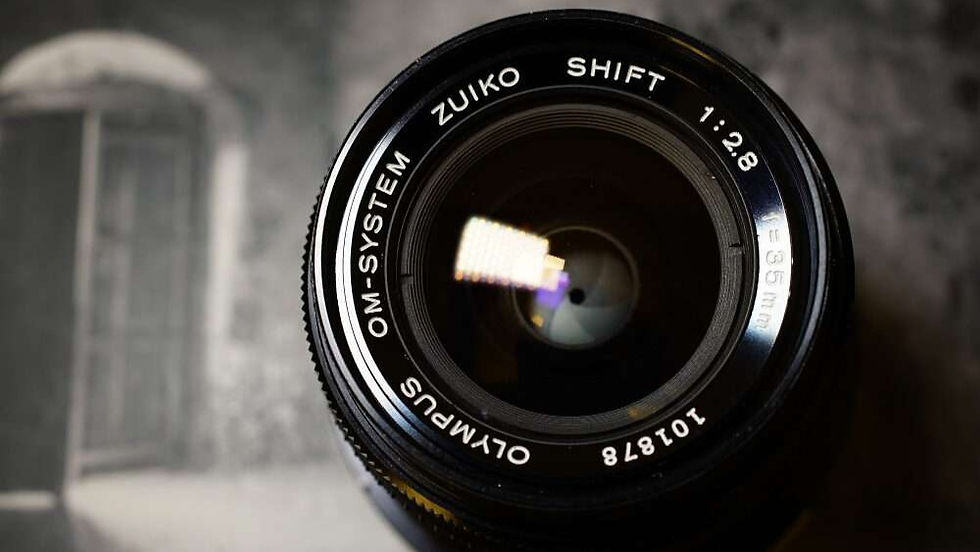
Machine vision’s popularity and quick development are due to its usefulness in a wide range of applications. It is used in industrial automation, the development of robots and autonomous vehicles, and smart systems. A computer needs to “understand” this visual information as valuable data. So, machine vision involves the recording of visual data using a camera sensor.
Sensors are, without a doubt, the brains of all machine vision cameras. Incoming photons are converted into digital signals by solid-state silicon chips. They are the basis of modern sensors. These signals are examined, watched, and transmitted in more detail. Yet, understanding the key concepts, characteristics, and basic terminology is a prerequisite for selecting the apt camera sensor for your vision system.
Many machine vision applications are for autonomous vehicles or robots that are not always connected to a power source. So, any image processing needs to be light enough to be completed in a short time for the machine to respond without requiring a lot of energy.
Introduction to Machine Vision
A digital or analog camera, embedded systems made up of processors and software, a frame grabber, and lighting make up a machine vision system. Machine vision systems complete their duties with impressive accuracy and speed. An imaging system’s performance is influenced by imaging optics as well as imaging electronics. The best system performance is achieved by integrating every component.
Machine vision’s popularity and quick development are due to its usefulness in a wide range of applications, such as industrial automation, the development of robots and autonomous vehicles, and more widely “smart” systems where equipment can adapt to external inputs in their surroundings.
The design of a visual capture device that can deliver sufficiently high-quality images so that an automated image recognition algorithm can effectively understand the information with high accuracy is one of the primary problems in establishing a machine vision system.
Types of Camera Sensors
One of the most important components of a machine vision system is image sensors, which are solid-state electronics. The sensor is the brain of every camera. Contemporary sensors are solid-state electronic devices with up to millions of discrete pixels. Although there are many camera manufacturers, a small number of businesses produce the majority of the sensors. The layout of the interface devices can result in variable performance between two cameras with the same sensor.
Phototube image sensors like Vidicons and Plumbicons were once the standard for cameras. Even though they are no longer in use, the nomenclature for sensor size and format still bears their influence.
To convert photons into electrical signals, image sensors commonly employ charge-coupled device (CCD) or complementary metal oxide semiconductor (CMOS) technology. The image sensor’s fundamental task is to capture light and transform it into a digital image while balancing noise, sensitivity, and dynamic range. The image is made up of several pixels. Bright light causes brighter pixels, while low light results in darker pixels. It is essential to ensure that the camera has the appropriate sensor resolution for the application.
Charge-Coupled Device (CCD)
A silicon chip with many photosensitive spots makes up the CCD sensor. The chosen sensor for high-resolution and low-light applications is the CCD sensor. A CCD sensor is a collection of pixels formed from a substance that produces electrons when exposed to light. A single amplifier reads out the charge generated by a sequence of electrodes. By transmitting the charge amongst the other pixels, each pixel is read out.
Because of how the amplification stage is built, CCDs often have a very low readout noise level. Many measurements can be made simpler by designing a CCD with an excellent dynamic range and strong accuracy. Each pixel must be read out separately. Read-out delays may be an issue when employing this architecture to build large array detectors.
Complementary Metal Oxide Semiconductor (CMOS)
One of the important technologies that has aided in the development of numerous machine vision applications is CMOS sensors. 4 It is frequently necessary to use numerous camera sensors to provide distinct views to recognize the whole 3D view because many automation operations necessitate 3D object recognition rather than just 2D. CMOS technologies have made significant progress recently. They are now the most widely used technology, for applications with small, light-weight footprints. Few CMOS sensors have the same dynamic range as CCD sensors. It is due to manufacturing improvements. CMOS sensors’ high-power efficiency and low cost make up for this.

Sensor Features
Before choosing sensors for your vision systems, you should understand the sensor features:
Pixels
Whenever an object’s light strikes a camera sensor, tiny potential wells known as pixels gather the optical data. These photodiodes, producing a charge proportional to the intensity of the incident light, serve as the pixels. These pixels gather data, arrange it, and send it to a screen for display.
Sensor size
The field of view of the vision system influences the size of the camera’s sensor. If the sensor is too big for the lens, vignette effects may cause the image to degrade or appear to fade away. Instead, the use of smaller sensors can end the tunnel effect.
Frame rate and shutter speed
The frame rate is the number of complete frames created in a second. For high-speed applications, using a higher frame rate is advised. This is to capture more photos as the object moves across the sensor. The amount of incident light determines the sensor’s exposure time, which determines the shutter speed.
Electronic shutter
In the past, CCD cameras could only use rolling shutters. CMOS cameras could use electronic or global shutters. A global shutter works similarly to a mechanical shutter. In that, all pixels are simultaneously exposed, sampled, and read out. On the other hand, a rolling shutter exposes, samples, and reads out.
Developments in Machine Vision Sensors
The use of CMOS sensors in machine vision is growing significantly, but it is crucial to select the appropriate sensor for the task at hand. Utilizing sensors that are only sensitive to one color could lower the price of the camera sensor. However, a single color detector might not be appropriate for applications in the picture interpretation step.
There are two key areas for camera sensor research for machine vision. They are faster frame rates for image capture and sensors that can work outside of the visible light region. Motion blur problems are less likely with faster capture. The involvement of data gathered from infrared wavelengths is useful for a wide range of applications.
Which is the right sensor for Machine Vision?
The classic conflict between CMOS and CCD sensors is nearly finished, with the advantage going to those equipped with CMOS technology. We must now focus our attention on a few crucial sensor settings that will have a significant impact on the system’s final performance when it comes to making critical design considerations for a machine vision system. Some parameters determine what types of vision applications benefit the most from each of them.
Impact of Pixel Size
However, the pixel size is typically underestimated, so it might be crucial to select the appropriate optics for the application. Machine vision cameras typically have pixels that range in size from 1.85 to 9 μm.
Large pixel sizes often provide superior signal-to-noise ratios and saturation capacities, improving dynamic range. Smaller pixels enable higher resolutions with smaller sensor sizes, which simplifies the selection of optics and is beneficial for low-noise applications. However small pixel sizes can be advantageous for medicinal applications, big pixel sizes are frequently necessary in fields like astronomy or transportation.
Importance of Sensor Size
The camera’s active region is the sensor, whose size is crucial to comprehending the field of view of the final system. Wider fields of view can be achieved with larger sensors for a given constant focal length. However, this is not a free service. Larger sensor sizes will necessitate supporting optics that don’t worsen distortions or damage the image at the edges.
Monochrome or Color Sensor
Most color sensors divide incoming light into a spectrum of colors using an optical filter on each pixel. These sensors will have a lower effective resolution than their monochrome counterparts because color recognition requires more pixels. Applications that need color segmentation or categorization should use color sensors. For high-accuracy applications, including metrology or barcode scanning, monochromatic sensors are preferable.
Global Shutter or Rolling Shutter
By considering Rolling Shutter vs Global Shutter, for low-cost applications with fixed targets or targets moving at very slow speeds, including life sciences or metrology applications, rolling shutter sensors are preferred. For high-speed applications with medium- to high-speed moving targets, however, such as sports analysis, broadcasting, AOI, and flaw detection on moving conveyors, global shutter sensors are preferred.
Wrapping Up
The use of CMOS sensors in machine vision is growing significantly, but it is crucial to select the appropriate sensor for the task to be performed. Utilizing sensors that are only sensitive to one color is one technique to lower the price of the camera sensor. However, a single color detector might not be appropriate for applications like determining the freshness of fruit, which frequently employs the fruit’s color as helpful information in the picture interpretation step. Two key areas for camera sensor technology for machine vision are faster frame rates for picture acquisition and sensors that can work outside of the visible light region.
According to your needs, Vadzo can assist you in choosing a camera sensor for machine vision applications in your projects. We don’t need you to choose the wrong tools and spend time arguing with them rather than completing your work. To meet your needs for camera sensors with higher resolution, more detail in an image, and more precise measurements, Vadzo offers more effective machine vision technology. Additionally, we offer a broad selection of industry-standard cameras, assemblies, and solutions, value-added services for component modification, and unique designs including scanners, CCTV, CCD/CMOS, medical imaging, surveillance systems, machine vision, and night vision equipment.
We are happy to help you with any issues or questions you may have.
Feel free to Contact Us.
